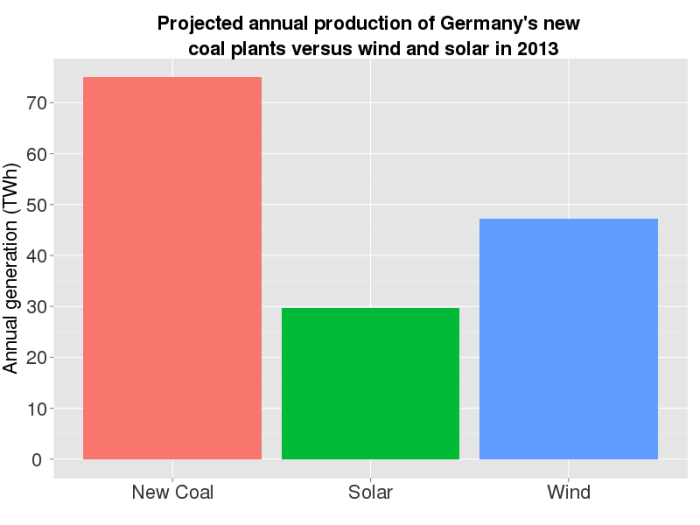That might be true for now (although if we pay 10ct/kWh for solar power and sell it at 6ct/kWh that is still a net loss). But there were already periods where the price for electricity went negative.
Yes, obviously. But those periods were very rare, and several were due to miscalculations of the grid operators, not pricnciple problems.
I can heartily recommend those data collections for the German electricty production of the last years, some very interesting things in there (both English and German):
http://www.ise.fraunhofer.de/en/renewable-energy-data?set_language=en
Of course, simply continue to expand renewables the same way as it was done in the past, and keep the current structure of the electricity market is not feasable. There need to be fundamental changes, but simply throttling down renewable expansion to next to nothing is about as bad as unlimited expansion via-feed-in tariffs in a merit-order market.
It means basically letting all those past subsidies go to waste.
Wind is already competetive with anything else as far es new constructions are concerned, solar is already competetive with new nuclear (see Hinkley Point for the costs of new nuclear). And both are getting cheaper stilll, while thermal power plants tend to get more expensive.
And we need more renewables, for a multitude of reasons.
At the moment the peak capacity of installed wind and solar power plants in Germany is roughly the same as the peak power consumption in Germany.
In the ISE pdfs are figures showing the combined production of solar and wind, and it gets clear that both are basically complementary. Maximum combined output is about half the total capacity, and those peaks are reched very rarely.
If new plants are built as predicted by the government, solar plant power production alone in 2050 will peak three times as high as (current) consumption - while doing nothing for power production at night. Where is all that power supposed to go?
At times of high production they will be throttled, stored or exported. Renewable peaks tend to be much higher than typical output, so seemingly massive oversupply (by installed capacity) is needed and desired.
At the moment, we can sell our excess power most of the time. But this cannot continue forever. Especially if our neighbors tried to do the same, they would also have surplus power at roughly the same time, so we rely on our neighbors not following us.
In addition, there will be no market for renewable energy in Europe outside Germany when we flood the market with cheap electricity.
The rest of europe doing the same is exactly what is needed for an electricity market where renewables have a high market share.
The larger the grid area, the more smoothed out and dependable intermittent renewables get. Wind strenght has a correlation length of something like 1500 km, cloud cover even less, and every 15° longitude shift the solar peak by one hour.
And Norway would be in principle able to almost single-handedly solve the storage problem for all of central/westen Europe.
Of course we would need much higher cross border grid capacity for this, but we are looking some decades into the future here.




